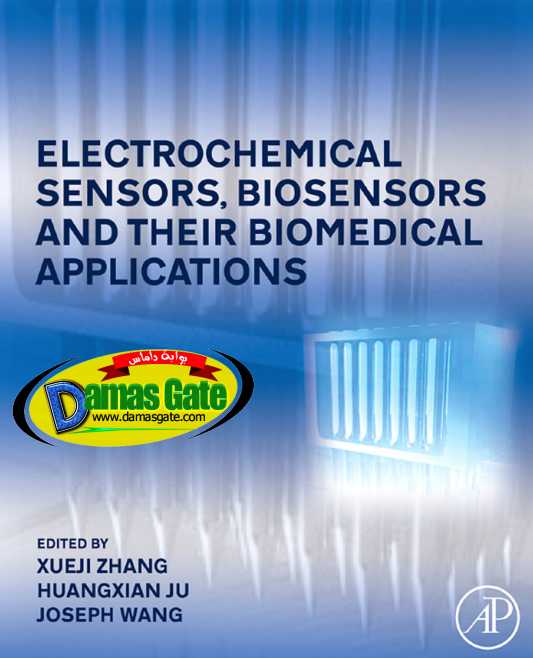Electrochemical Sensors, Biosensors, Biosensors and their Biomedical Applications

PREFACE
The development of chemical and biological sensors is currently one of the most active areas
of analytical research. Sensors are small devices that incorporate a recognition element with a
signal transducer. Such devices can be used for direct measurement
of the analyte in the sample matrix. There are a variety of combinations of recognition
elements and signal transducers. Electrochemical sensors, in which an electrode is
used as the transduction element, represent an important subclass of chemical sensors.
Such devices hold a leading position among sensors presently available and have found a vast
range of important applications in the fields of clinical, industrial, environmental,
and agricultural analyses. The field of sensors, in general, and electrochemical
sensors, is interdisciplinary and future advances are likely to occur from progress in several disciplines.
Up to the 1960s, the pH glass electrode could be considered as the only widely used chemical sensor. The modern concept of biosensors owes much to L. Clark Jr. who introduced the amperometric glucose enzyme electrode in 1962. Over the past four decades we have witnessed the evolution of sophisticated sensing devices based on different
transduction principles and recognition elements. With
the start of the 21st century, such devices
are routinely being used for a wide range of clinical, environmental, industrial
and security applications. Future progress in sensor development would require extensive
multidisciplinary efforts for meeting emerging needs ranging from early
detection of disease biomarkers or minimally invasive continuous monitoring of glucose
and lactate, to early detection of biological warfare agents. Research into electrochemical
sensors and their biomedical applications is proceeding in a number of exciting
directions, as refl
ected by the content of this book.
Download
*

PREFACE
The development of chemical and biological sensors is currently one of the most active areas
of analytical research. Sensors are small devices that incorporate a recognition element with a
signal transducer. Such devices can be used for direct measurement
of the analyte in the sample matrix. There are a variety of combinations of recognition
elements and signal transducers. Electrochemical sensors, in which an electrode is
used as the transduction element, represent an important subclass of chemical sensors.
Such devices hold a leading position among sensors presently available and have found a vast
range of important applications in the fields of clinical, industrial, environmental,
and agricultural analyses. The field of sensors, in general, and electrochemical
sensors, is interdisciplinary and future advances are likely to occur from progress in several disciplines.
Up to the 1960s, the pH glass electrode could be considered as the only widely used chemical sensor. The modern concept of biosensors owes much to L. Clark Jr. who introduced the amperometric glucose enzyme electrode in 1962. Over the past four decades we have witnessed the evolution of sophisticated sensing devices based on different
transduction principles and recognition elements. With
the start of the 21st century, such devices
are routinely being used for a wide range of clinical, environmental, industrial
and security applications. Future progress in sensor development would require extensive
multidisciplinary efforts for meeting emerging needs ranging from early
detection of disease biomarkers or minimally invasive continuous monitoring of glucose
and lactate, to early detection of biological warfare agents. Research into electrochemical
sensors and their biomedical applications is proceeding in a number of exciting
directions, as refl
ected by the content of this book.
Download
*